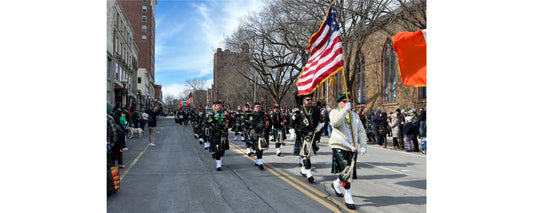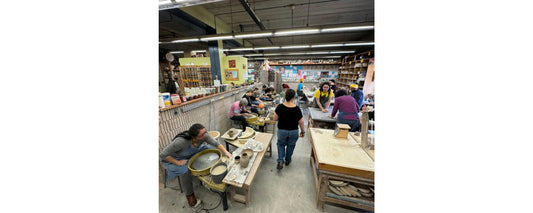Ironically, it’s hard to see the Vision Trail—where it begins, where it ends, and what exactly it means.
If it weren’t for a vintage street sign on Water Street across from High School in the Community magnet school—a still-shiny sign emblazoned with the logo for a sports event that transpired 17 years ago—the vision would be even more impaired. But there it is: an invitation to stroll.
When the Vision Trail opened in 1995, it was a brightly painted path glowing as brightly as the Yellow Brick Road in the land of Oz, beckoning you to follow follow follow follow. It was augmented by a 360- foot-long Freedom Fence public artwork designed by Sheldon Krevit. And it led to singular entertainments the likes of which New Haven has seldom seen.
Nowadays, entering the nondescript opening under the highway that seems solely intended for maintenance trucks and construction vehicles, you feel more like a trespasser than a visionary.
sponsored by
But rest (or rather, walk) assured: the Trail is there for you. It has changed its complexion many times in the two decades since it was first conceived. At one point, the path was more open. Then it was more narrow. For years it was clearly marked with spray paint messages, but no longer. For a period of several months a few years ago, it was even inhabited; a small group of homeless people set up a neat, orderly campsite not far from the trail. The encampment, sort of precursor to Occupy New Haven, was eventually dissembled and strong new fences were erected. Now it’s a narrow, well-defined path clearly just for walking.
On your left as you enter the Vision Trail from the Water Street side, you see the back end of the central New Haven Post Office building, which has its entrance a few hundred feet away on Brewery Street. On the right hand side are the Amtrak and Metro-North train yards—where the trains go when they’re not in use at the station a few blocks away on Union Street. So what you’re seeing, on the Vision Trail, is a behind-the-scenes glimpse of how our city communicates and connects.
And community interaction is what brought the Trail about in the first place. It was conceived in the hoopla leading up to New Haven’s hosting of the Special Olympics World Games in 1995. The games, modeled on other Olympic-style competitions and intended as an empowering event for athletes with intellectual disabilities, are the vortex of a whirlwind of cultural activities in its host city. During the New Haven games, the Vision Trail was created to encourage tourists to walk directly, and safely, from downtown—where there were oodles of family activities surrounding the Special Olympics—to the waterfront, where there were outdoor festivals and visits from historic Tall Ships.
Arranging the trail meant special negotiations with various landowners, epitomizing the very concept of community and connectivity that the project was meant to represent.
But the Vision Trail is more than a symbol, and it retained its usefulness long after the Tall Ships sailed away again. Especially in the years before the Metropolitan Business Academy was built, long stretches of Water Street were without sidewalks, or cluttered with tall weeds or cement blocks or other impediments to productive pedestrianism.
When an IKEA store opened on Sargent Drive, it gave the Vision Trail new utility. No, you don’t see a lot of people carrying bedframes or chests or drawers down the narrow walkway, but you do see folks on their way to a cheap lunch of Swedish meatballs and lingonberries.
The Trail influenced how bike paths and greenways have been developed in New Haven, and it’s now officially part of a grander Farmington Canal trail still in development and winding its way out to Hamden and beyond.
The vision still matters. When some of the grass along it became overgrown earlier this summer, an attentive citizen thought to note it on the community-conscious website See-Click-Fix. For the past few years, the area has been maintained by High School in the Community, much the same way as stretches of highway are “adopted” and kept clean by charity groups. For regular walkers along the Vision Trail, there’s a special sense of duty. After heavy rains, when deep puddles can give too literal a meaning to Water Street, folks will set out planks or old tires from the nearby underbrush so that the puddles can be straddled. These tiny bridges provide the same service to a subset of dogs and pedestrians as the multi-million dollar car bridges in the area do for motorists: connect you to Long Wharf.
The Vision Trail has long since stopped being discussed as a symbol of unity. It’s no longer a community art project involving decorative bricks, street paintings and a lot more signage. Now it’s just a trail. But there’s vision in that.
Written and photographed by Christopher Arnott.








